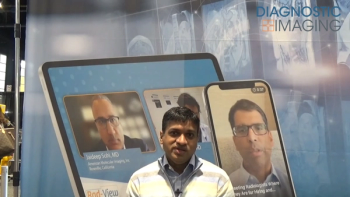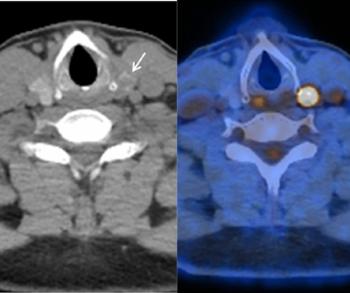
GE debuts clinical MR spectroscopy
GE Medical Systems of Milwaukee gained regulatory clearance inJune to begin selling PROBE (proton brain exam), the first MRspectroscopy product available for non-experimental use. In making the announcement, GE made good on its 11-year-old commitmentto
GE Medical Systems of Milwaukee gained regulatory clearance inJune to begin selling PROBE (proton brain exam), the first MRspectroscopy product available for non-experimental use.
In making the announcement, GE made good on its 11-year-old commitmentto bring MR spectroscopy into clinical practice. It was in partthe promise of noninvasively measuring bodily metabolism thatled GE engineers to favor high-field superconducting technologyfor their approach to nuclear magnetic resonance imaging. Accordingto industry observers, the choice radically altered the cost ofMR technology and character of MR practice.
PROBE was first shown as a work-in-progress at the 1992 RadiologicalSociety of North America conference. U.S. regulatory review tookmore than two years.
PROBE is a single-voxel proton spectroscopy examination designedspecifically for brain applications. Metabolic information canbe collected in about 10 minutes. Designed as an add-on to standardMR brain imaging, PROBE is simple enough for a technologist touse without direct supervision by a medical physicist, accordingto the manufacturer. It costs about $40,000.
"PROBE is completely automated, which makes it very user-friendly,"said Dr. Lawrence Tannenbaum, section chief for neuroradiologyat the New Jersey Neuroscience Institute in Edison, NJ.
Tannenbaum notes that the package is limited in some ways, butit has proved extremely valuable when it has been applied. Thetechnique may have a role in evaluating tumor therapy, stroke,epilepsy, Alzheimer's disease, HIV and hepatic encephalopathy.Spectra acquired by PROBE can assist physicians during diagnosisand therapy planning.
"The most exciting thing for us is being able to discriminatetumor from infarction," Tannenbaum said.
PROBE is limited in the sense that it still displays artifactsthat are corrected by postprocessing software initially not partof the software package, Tannenbaum noted. Delicate evaluations,like those encountered when examining epilepsy, are difficultto make, he said.
PROBE is an option on the GE Horizon and as an upgrade on the1.5-tesla Signa Advantage 4X and RP platforms.
Newsletter
Stay at the forefront of radiology with the Diagnostic Imaging newsletter, delivering the latest news, clinical insights, and imaging advancements for today’s radiologists.




























